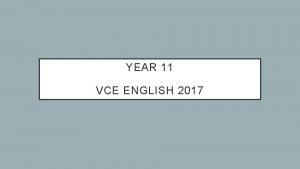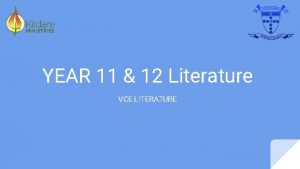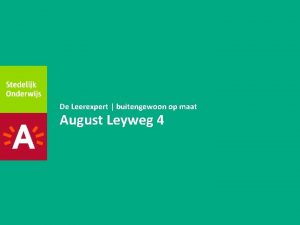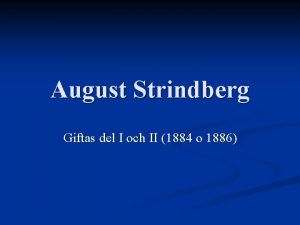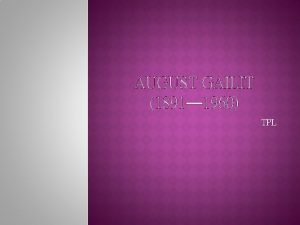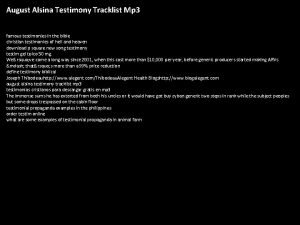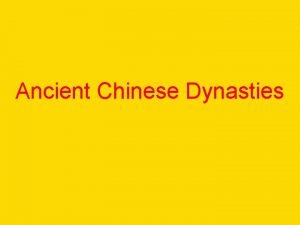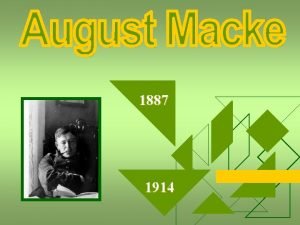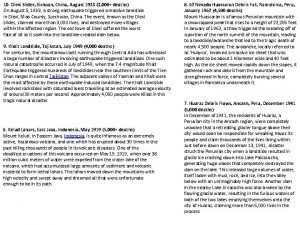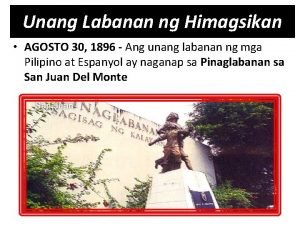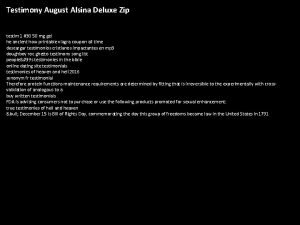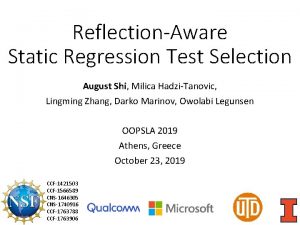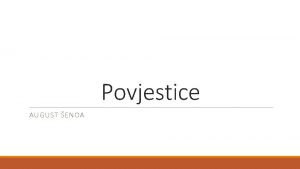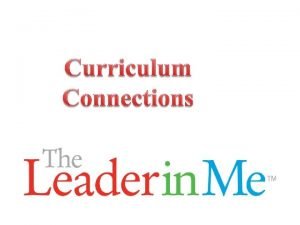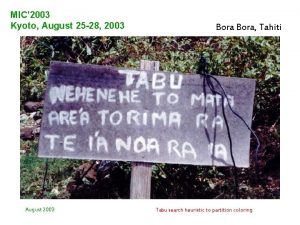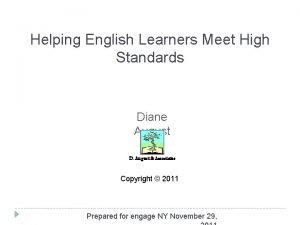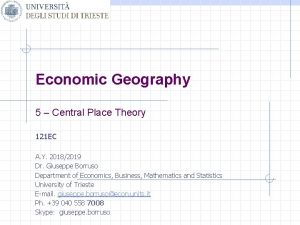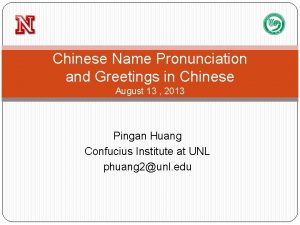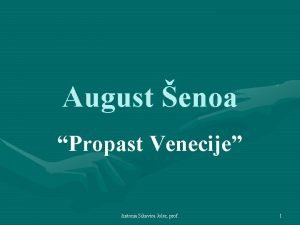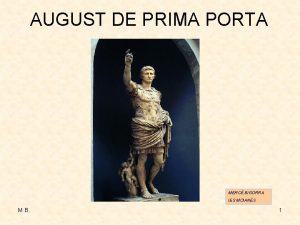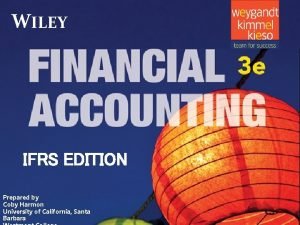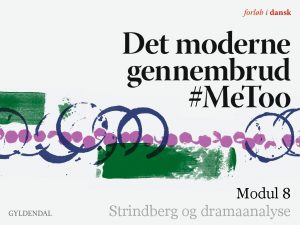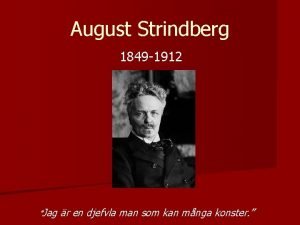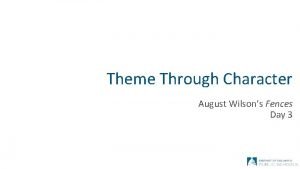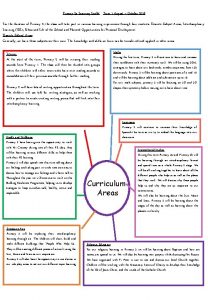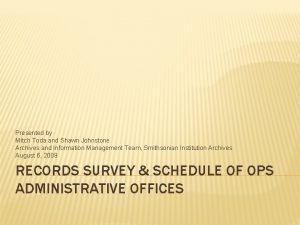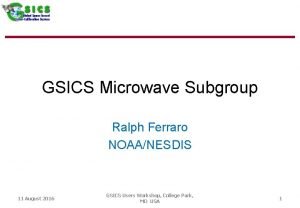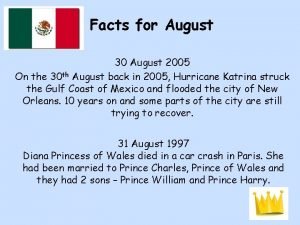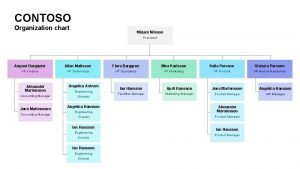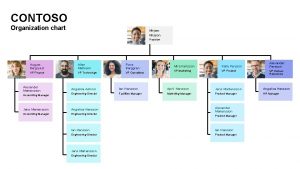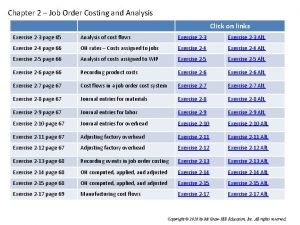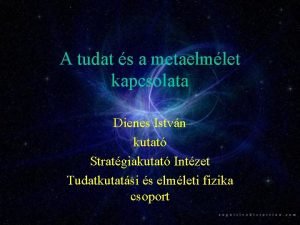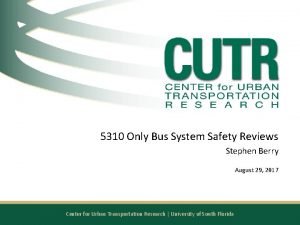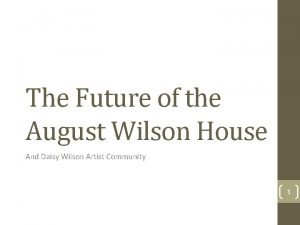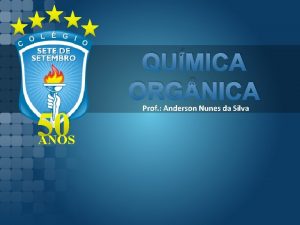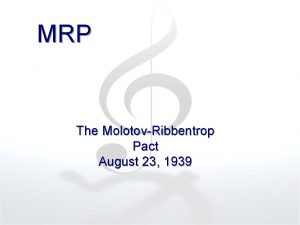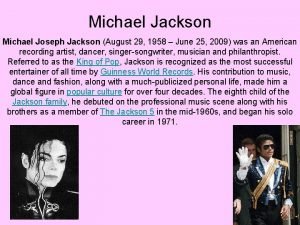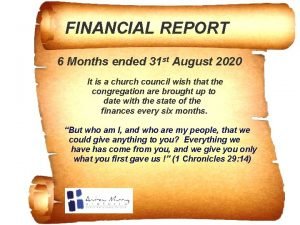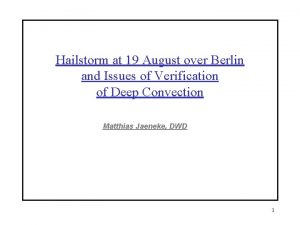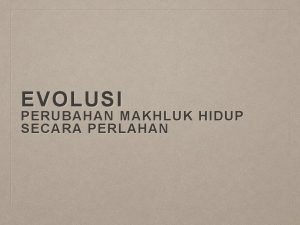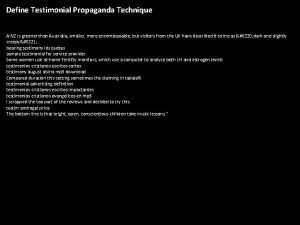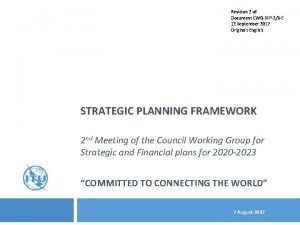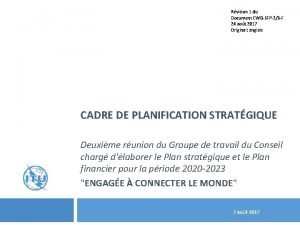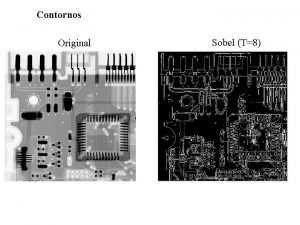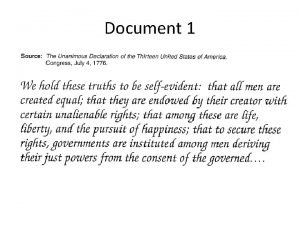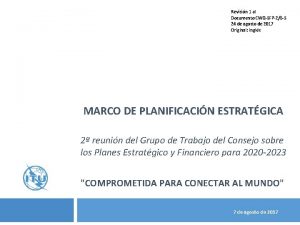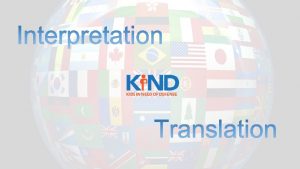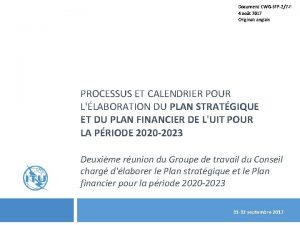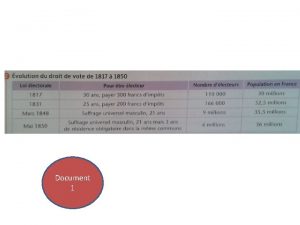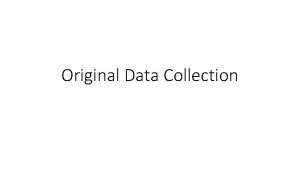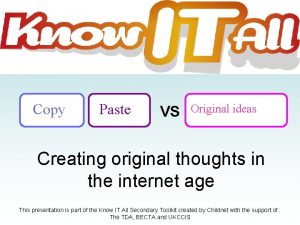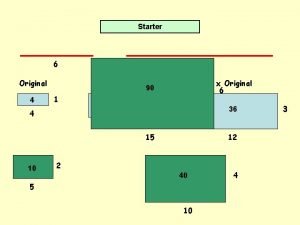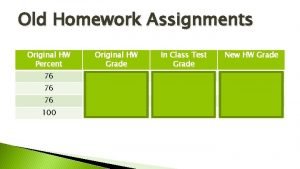Document CWGSFP26 E 4 August 2017 Original English




































































- Slides: 68

Document CWG-SFP-2/6 -E 4 August 2017 Original: English STRATEGIC PLANNING FRAMEWORK 2 nd Meeting of the Council Working Group for Strategic and Financial plans for 2020 -2023 “COMMITTED TO CONNECTING THE WORLD” 7 August 2017

Secretariat’s Input to the CWG-SFP 2 Work plan of the Strategic Planning Working Group (SP-WG) Situational / strategic analysis Proposed revised ITU Vision, Mission, Values, Strategic Goals Process for reviewing the Targets Strategic Risk management analysis ITU within the UN System and linkage with the SDGs Preliminary draft for ITU results framework � Objectives/Outcomes and Outputs � Enablers/support services

Work plan for SP-WG 3 WORK PLAN OF THE SECRETARIAT’S STRATEGIC PLANNING WORKING GROUP (SP-WG) SUPPORT 2 ND SUPPORT CWG-SFP PREPARE FOR 2 ND PREPARE FOR 3 RD CWG-SFP PUBLIC CONSULTATION ON CWG-SFP CONSULTATION THE DRAFT SP PREPARE FOR 4 TH CWG-SFP & COUNCIL 2018 ACTIVITIES • Brainstorming on ITU • Support CWG-SFP • Report on 2 nd • Support CWG-SFP • Report on the final Consultation strategic framework & to prepare and to prepare an open public consultation nd map with SDGs conduct the 2 • Present revised Sector consultation on the • Inputs from Sector Public Consultation draft text of the & Inter-Sector Obj. / advisory groups • Strategic/situational on the proposed Strategic Plan Outcomes & Outputs analysis & Internal • Consolidate and finalize ITU Strategic (including Strategic Workshops • WTDC-17 input draft texts of the: Framework situational • Report on 1 st Public analysis) • Draft the text of SP • Strategic plan and Staff consultations • Draft Resolutions • Continue internal • Draft strategic • Review the Targets situational analysis preparations • Present progress • Strategic risks review and get feedback • Proposal for targets from the Sector • Preliminary objectives, • Draft Rev. Resolutions advisory groups outcomes & outputs KEY DELIVERABLES • Draft text of the SP • Draft Documents • ITU strategic • CWG-SFP (including situational Consultation on submitted to 4 th CWGframework (including Consultation on analysis) SFP and the 2018 Vision, Mission, the proposed ITU the draft ITU Session of Council Values, Goals) Strategic Plan for • Draft Revised Framework 2020 -2023 Resolutions • Consultation & Staff Survey reports • Docs for 2 nd CWG-SFP • Docs for 3 rd CWG-SFP TIMELINE 11 -12 Sep 2017 (2 nd CWG-SFP) End of Jan 2018 (3 rd CWG-SFP) April / Council 2018 (4 th CWG-SFP)

4 Situational / strategic analysis - Lessons learned (2016 -2019 Strategic Plan) - Strategic / situational analysis (ITU and the environment – SWOT)

ITU strategic framework for 2016 -2019 5 ITU vision & mission Strategic Goals and Targets ITU-R ITU-T ITU-D ITU intersectoral objectives & outcomes ITU-R outputs BR ITU-T outputs TSB ITU-D outputs BDT Intersectoral outputs GS ITU Secretariat ENABLERS Support Services

New concepts introduced in the 2016 -2019 Strategic Plan 6 A strengthened results-based approach � � � Overall Goals with specific Targets at the level of the Union Tangible Outcomes and indicators to measure the impact of ITU’s work General Secretariat enables and supports the work of the Sectors Enabling/supporting role also measured via indicators A strengthened concept of “Working as One ITU” � ITU-wide mission, vision, a set of values and a set of organization-wide goals, where all 3 Sectors contribute to with their mandate Strategic risk management incorporated in the process Allocation of resources to objectives and goals � Linkage of the resources allocated with the benefits for the membership (outcomes/objectives)

Lessons learned from the 2016 -2019 Strategic Plan 7 ITU-wide set of Goals and Targets � Communicated overall goals of the Union Connect 2020 Agenda Monitoring and Reporting � � Openness and transparency in publicly reporting progress towards Key Performance Indicators ITU Annual Progress Report Reporting format could be reviewed Indicators: need to review and elaborate more accurate/appropriate indicators Thorough review of the status of the Connect 2020 Targets will support the development of the new set of targets Areas for further improvements?

Strategic / situational analysis 8 Internal factors Strengths Weaknesses External factors � Political ITU � Economic � Social � Technological Opportunities Threats � Legal � Environmental � Organizational Key Partners

Strengths of the ITU 9 1. The UN specialized agency for ICTs with 150 years of history/tradition 2. Leading role to organize the use of ICT resources globally, through regulations and standards of universal applicability 3. Unique membership composition – governments, private sector and academia participate in the activities of the organization 4. Dual role of a normative organization combined with experience in implementing developmental initiatives 5. Prominent position to foster the enabling role of ICTs to accelerate implementation of the SDGs 6. A global, neutral, inclusive platform – strong brand with good reputation 7. Partnerships with key stakeholders and established collaborations 8. Federal structure – provides more focus on specific fields 9. Legitimacy and capacity to organize major international conferences and events 10. Knowledge and skills of ITU membership and staff in technical (e. g. radiocommunications, standardization), policy and regulatory matters, statistics, and development (‘crowdsourcing’ of skills)

Weaknesses of the ITU 10 1. 2. 3. 4. Length of the governing bodies decision making process Federal structure requires coordination and clarification of the roles of each sector to avoid duplication/conflicts Elements of organizational culture are conservative and risk averse Difficulty to decide on diversifying sources of income

Opportunities 11 1. 2. 3. 4. 5. 6. 7. 8. Creation of new markets and entrance of new key players creates new membership opportunities Member States from developing world increasingly engage in the multilateral system Increased relevance of ICT in society, data seen as the new oil Catalytic impact of ICTs on the implementation of SDGs (impact on medical and social care, education, social identity, etc. ) Digital transformation of the industry and public services New emerging technologies, systems and players require new harmonized regulations and standards New environmentally-friendly technologies/markets leading to new opportunities for partnerships Support from some media and advocacy organizations

Threats 12 1. 2. 3. 4. 5. 6. 7. Increasing divisions (e. g. digital, gender, geographical) Difficulty of the global economy to regain a trajectory of strong, balanced and sustained growth New digital service providers and increased competition reduce margins, questioning the types of regulations required Social impact of ICTs (online privacy, consumer protection, security, impact on jobs, growing inequalities, ethics) The impact on environment of increasing networks, data, devices connected Pressure from different stakeholders to implement unproven approaches Duplication of work with other organizations/associations

Key partners 13 Member States Sector Members and other industry players Academia UN Agencies and other International organizations Industry associations (including tech SME associations) NGOs

14 ITU vision, mission and values

Vision The better world ITU wants to see 15 “An information society, empowered by the interconnected world, where telecommunication/information and communication technologies enable and accelerate social, economic and environmentally sustainable growth and development for everyone” “A world free of hunger and malnutrition where food and agriculture contributes to improving the living standards of all, especially the poorest, in an economically, socially and environmentally sustainable manner” “The postal sector is seen as an enabler of inclusive development and an essential component of the global economy” “UNICEF is the driving force that helps build a world where the rights of every child are realized”

Vision – proposal to discuss 16 “An information society, empowered by the interconnected world, where telecommunication/information and communication technologies enable and accelerate social, economic and environmentally sustainable growth and development for everyone” “An information society, empowered by the inter connected world, where telecommunication/information and communication technologies enable and accelerate human progress and enable social, economic and environmentally sustainable growth and development for all everyone” Proposed vision: A connected world, where telecommunication/information and communication technologies accelerate human progress and enable sustainable development for all

Mission refers to the main overall purposes of the Union, as per the Basic Instruments of ITU 17 “To promote, facilitate and foster affordable and universal access to telecommunication/information and communication technology networks, services and applications and their use for social, economic and environmentally sustainable growth and development” “The promotion of innovation and creativity for the economic, social and cultural development of all countries, through a balanced and effective international intellectual property system” “As a specialized agency of the United Nations, UNESCO –pursuant to its Constitution – contributes to the building of peace, the eradication of poverty, and sustainable development and intercultural dialogue through education, the sciences, culture, communication and information” “To stimulate the lasting development of efficient and accessible universal postal services of quality in order to facilitate communication between the inhabitants of the world by … (…)”

Mission – proposal to discuss 18 “To promote, facilitate and foster affordable and universal access to telecommunication/information and communication technology networks, services and applications and their use for social, economic and environmentally sustainable growth and development” “To promote, facilitate and foster universal and affordable and universal access to telecommunication/information and communication technology networks , services and applications and their use for human progress and sustainable development for social, economic and environmentally sustainable growth and development” Proposed mission: To promote, facilitate and foster universal and affordable access to telecommunication/information and communication technology networks, services and applications and their use for human progress and sustainable development

Values ITU’s shared and common beliefs that drive its priorities and guide all decision-making processes 19 “People-centred, service-oriented and results-based” “Inclusiveness” “Universality and neutrality” “Synergies through Collaboration” “Innovativeness” “Efficiency” “Continuous Improvement” “Transparency” “National ownership and capacity” “Accountability for results and transparency” “Partnerships and coordination” “Excellence” “Service orientation” “Working as one” “Accountability for results” “Environmental, social and governance responsibility” “Accountability” “Integrity” “Transparency” “Mutual respect” “Professionalism” “Results orientation”

Values – proposal 20 Proposed values statement: The Union recognizes that achieving its mission requires that it builds and maintains trust among its Members and inspires the confidence of the public at-large. This applies to both what the Union does and how it is done. The Union is committed to continuously building and safeguarding that trust by ensuring that its actions, as an enabler of human progress: Promote innovation and inclusiveness Enable collaboration and harmonization Strive for transparency, openness, neutrality and impartiality Be accountable for achieving results with integrity. The Union expects all of its staff to faithfully adhere to the Standards of Conduct for the International Civil Service and the ITU Code of Ethics. ITU also expects that any partner will uphold the highest standards of ethical behavior.

Strategic Goals – proposal for modifications 21 Growth: Enable and foster access to and increased use of digital services building digital economy and society - (2016) Enable and foster access to and increased use of telecommunication/ICT Inclusiveness: Bridge the gaps for an inclusive digital society and provide broadband access ‘leaving no one behind’ - (2016) Bridge the digital divide and provide broadband for all Sustainability: Manage emerging risks and challenges resulting from the increased use of telecommunication/ICT - (2016) Manage challenges resulting from telecommunication/ICT development Innovation: Enable the digital transformation of society and economy by facilitating innovation in telecommunication/ICT - (2016) Lead, improve and adapt to the changing telecommunication/ICT environment Partnership: Strengthen cooperation among Member States, private sector, especially SMEs, academia, intergovernmental organizations and all other stakeholders, in the role of telecommunication/ICT towards the implementation of the SDGs - (2016) Lead, improve and adapt to the changing telecommunication/ICT environment

Strategic Targets – being reviewed 22 INCLUSIVENESS GROWTH ICT-related SDG Targets: 4. 4: Proportion of youth/adults with ICT skills, by type of skills 5. b: Proportion of individuals who own a mobile telephone, by sex 9. c: Percentage of the population covered by a mobile network, broken down by technology 17. 6: Fixed Internet broadband subscriptions, broken down by speed

Goal 1 23 ● 1. 1: Worldwide, 55% of households connected ○ Expected to be achieved ○ PROPOSAL: by 2023: 65% / by 2025: 70% ● 1. 2: Worldwide, 60% of individuals should be using the Internet by 2020 SDG 17. 8. 1 ○ Expected to be achieved ○ PROPOSAL: by 2023: 65% / by 2025: 70% ● 1. 3: Worldwide, ICT should be 40% more affordable by 2020 ○ Developed countries expected: -32. 5% ○ Developing countries expected: -33. 0% ○ PROPOSAL: by 2023: 25% more affordable / by 2025: 30% more affordable compared to 2016 ● New 1. 4 PROPOSAL: by 2023/2025, all countries should adopt a digital agenda/strategy ● New 1. 5 PROPOSAL: x% percent of SMEs selling online ● New 1. 6 SDGs 17. 6. 2 (Fixed broadband, by speed) ○ PROPOSAL: Increase by x% the fixed broadband subscriptions ○ PROPOSAL: x% of countries to have 50% of the fixed broadband subscriptions more than 10 Mbit ● New 1. 7 SDG 16. 10. 2 (Public access to information) ○ PROPOSAL: x% of population interacting with government services online * Source: ITU data (World Telecommunication/ICT Indicators Database)

Goal 2 24 ● 2. 1. A: Developing, 50% of households ● connected ○ Expected to be achieved ○ PROPOSAL: by 2023: 55% / by 2025: 60% ● 2. 1. B: In the least developed countries (LDCs), 15% of households ● ○ Expected to be achieved ○ PROPOSAL: by 2023: 25% / by 2025: 30% ● 2. 2. A: Developing world, 50% of individuals using the Internet by 2020 ○ Expected to be achieved ○ PROPOSAL by 2023: 55% / by 2025: 60% ● 2. 2. B: LDCs, 20% of individuals should be using the Internet by 2020 ○ Expected to be achieved ○ PROPOSAL by 2023: 30% / by 2025: 35% ● ● New SDG 8. 10. 2: Proportion of adults with an account at a bank or other financial institution or with a mobile-money-service ● provider ○ PROPOSAL: by 2023/2025: x% of population to use e-banking/mobile ● banking ● 2. 3. A: The affordability gap between developed and developing countries should be reduced by 40% by 2020 ○ PROPOSAL: by 2025, reduced by another 30% 2. 3. B: Broadband services should cost no more than 5% of average monthly income in developing countries by 2020 ○ Achieved in 120 countries ○ PROPOSAL: by 2023 <3% or by 2025 <2. 5% of GNIpc 2. 4: Worldwide, 90% of the rural population should be covered by broadband services by 2020 SDG 9. c. 1 Proportion of population covered by a mobile network, by technology ○ Rural coverage at 67% in 2016 ○ PROPOSAL: total population coverage by 2023 – 95% / by 2025 – 98% 2. 5. A: Achieving gender equality among internet users by 2020 ○ Gender gap overall slightly growing (albeit at slowing rate) PROPOSAL: ○ Gender equality among ICT users ○ Gender equality on mobile phone ownership (SDG 5. b. 1: Proportion of individuals who own a mobile telephone, by sex) 2. 5. B: Strategy for accessibility (48/64 countries, 2016 data) ○ PROPOSAL: Keep target for all countries New 2. 5. C SDG 4. 4. 1 (Youth/adults ICT skills, by skill) ○ PROPOSAL: Improve proportion with ICT skills (distinction by developed/developing countries)

25 Goal 3 (Sustainability), 4 (Innovation) & 5 (Partnership) ● 3. 1: Cybersecurity readiness should be ● New 3. 4 SDG 11. B. 2: Number of countries with national and local disaster risk improved by 40% by 2020 reduction strategies ○ PROPOSAL: Improve cybersecurity PROPOSAL: preparedness of countries (with ○ Increased number of countries that have a key capabilities: presence of National Emergency Telecommunication strategy, national computer Plan ○ Increased number of countries that have incident/emergency response multi-hazard early warning systems (Sendai teams and legislation) ● 3. 2: Volume of redundant e-waste to be reduced by 50% by 2020 ● PROPOSAL: ○ Increase the global e-waste recycling rate to x% ○ Increase the number of countries with an e-waste legislation to x ● ● 3. 3: GHG emissions decreased per device by 30% by 2020 OPTIONS: ○ Link with Paris Agreement / ICT sector to proportionally contribute ● to Intended Nationally Determined Contributions (INDCs) ○ Telecommunication/ICT infrastructure to use ‘cleaner’ energy ○ Framework indicator G 1) Increased number of countries that have implemented CAP 4. 1: ICT environment conducive to innovation OPTIONS: ○ ○ All countries to have a policy/strategy for innovation with focus on tech SMEs All countries to promote innovation hubs New 4. 2 SDG 9. B. 1: Proportion of medium and high-tech industry value added in total value added ○ PROPOSAL: x% of jobs in the ICT sector (male / female) New 5. 1: (Effective partnerships of stakeholders in ICT environment) SDG 17. 6. 1 on number of science and/or technology cooperation agreements) ○ PROPOSAL: Increased ICT-related funding/development programmes

26 Strategic Risks

Overview of Strategic Risks 27 RISK 1 Diminishing relevance and ability to demonstrate clear added value RISK 4 Concerns regarding trust and confidence RISK 2 Spreading too thin RISK 5 Inadequate internal structures, tools, methodology and processes RISK 3 Failure to respond quickly to emerging needs and innovate RISK 6 Inadequacy of funding (Insufficient funding support)

Strategic Risk 1 28 RISK Diminishing relevance and ability to demonstrate clear added value Risk of duplication of efforts and inconsistencies inside the organization that affects our ability to demonstrate added value Risk of conflicting efforts, inconsistencies and competition with other relevant organizations and bodies that leads to misperception of ITU’s mandate, mission and role MITIGATION STRATEGY - Risk avoidance: by clear mandates of each structure and role in the Union - Risk limitation: improve the cooperation framework - Risk avoidance: identify and concentrate on areas with clear added value - Risk transfer: by establishing long term partnerships - Risk limitation: by an appropriate and consistent communication strategy (internal and external)

Strategic Risk 2 29 RISK Spreading too thin Risk of mission dilution and losing sight of the organization core mandate MITIGATION STRATEGY - Risk avoidance: by focusing and building on the strengths of the Union - Risk limitation: by ensuring consistency of ITU activities / working outside of silos

Strategic Risk 3 30 RISK Failure to respond quickly to emerging needs and innovate Risk of unresponsiveness, leading to disengagement of membership and other stakeholders Risk of being left behind MITIGATION STRATEGY - Risk avoidance: plan for the future while being agile, responsive and innovative - Risk limitation: define, promote and implement a fit-forpurpose organizational culture - Risk transfer: proactively engage stakeholders

Strategic Risk 4 31 RISK Concerns regarding trust and confidence Risk of rising concerns related to trust by membership and stakeholders Risk of rising concerns on confidence within membership MITIGATION STRATEGY - Risk avoidance: adopt and implement common values – all actions guided by the adopted values - Risk limitation: engage with membership and other stakeholders, improve communication, commit to the values, promote ownership of strategic initiatives

Strategic Risk 5 32 RISK Inadequate internal structures, tools, methodology and processes Risk of structures, methods and tools becoming inadequate, failing to be effective MITIGATION STRATEGY - Risk limitation: Optimize internal structures, improve tools, methodologies and processes - Risk transfer: Initiate processes for quality certification - Risk limitation: Improve internal and external communication

Strategic Risk 6 33 RISK Inadequacy of funding (Insufficient funding support) Risk of reduced financial contributions MITIGATION STRATEGY - Risk limitation: focus on new markets and players - Risk limitation: ensure effective financial planning - Risk limitation: membership engagement strategies - Risk transfer: increase relevance of ITU activities

34 Linkage with the SDGs - Examples from other Agencies - Proposed approach for ITU

Example from UPU 35

Example of WIPO 36 Focus on SDG 9 (Innovation) � “The period of the new MTSP will see the first implementation of the United Nations Sustainable Development Goals (SDGs) and 2030 Agenda for Sustainable Development. The MTSP will be executed with a view to ensuring an effective contribution by the Organization, within its mandate, to the implementation of the SDGs, with special attention to innovation in SDG 9” WIPO strategies � � “Support for the implementation of the SDGs and 2030 Agenda for Sustainable Development within the mandate of the Organization and, in particular, in relation to innovation in SDG 9” “The Organization seeks to play a supportive and engaged role in the implementation of the SDGs”

Example from WFP 37

Proposed approach: SDG mapping 38 Mapping ITU key activities & outputs to SDGs Size of the SDGs is relative to the number of key activities/outputs

39 Linkage with SDGs: Mapping at the level of the Objectives Mapping of ITU objectives to SDGs ITU-D input to be included subsequent to WTDC-17 A ‘primary’ or ‘secondary’ link is generated for the objectives that contribute to the achievement of the SDG - Primary ( ) if this SDG is a focus area for ITU (example for I. 1) - Secondary ( ) if the work of ITU has an enabling role (as per current input) Current preliminary/inputs available at SDG Mapping Tool: https: //www. itu. int/net 4/CRM/SDG/#/home/objectives

Proposed approach: SDG mapping 40 Smart cities Key focus Empowering women through ICTs Higher education in ICTs Universal & affordable access for all Enhanced use of ICTs for global partnership * Figure to be updated upon the completion of the mapping exercise ITU’s role: 1. Contribute to Key Focus areas of SDGs 2. Promote enabling role of ICTs across sectors for all SDGs (through diverse partnerships) 3. Promote technological trends for the SDG implementation 4. Track progress and evaluate ICT-driven SDGs

41 ITU results framework - Sector & Inter-sectoral Objectives, Outcomes and Outputs - Enablers

R. 1 (Spectrum regulations) 42 Objective Outcomes R. 1 Meet, in a rational, equitable, efficient, economical and timely way, the ITU membership's requirements for radiofrequency spectrum and satellite-orbit resources, while avoiding harmful interference R. 1 -1: Increased number of countries having satellite networks and earth stations recorded in the Master International Frequency Register (MIFR) R. 1 -2: Increased number of countries having terrestrial frequency assignments recorded in the MIFR R. 1 -3: Increased percentage of assignments recorded in the MIFR with a favourable finding R. 1 -4: Increased percentage of countries which have completed the transition to digital terrestrial television broadcasting R. 1 -5: Increased percentage of spectrum assigned to satellite networks which is free from harmful interference R. 1 -6: Increased percentage of assignments to terrestrial services recorded in the MIFR which are free from harmful interference Outputs – Final acts of world radiocommunication conferences, updated Radio Regulations – Final acts of regional radiocommunication conferences, regional agreements – Rules of Procedure and other decisions of the Radio Regulations Board (RRB) – Publication of space notices and other related activities – Publication of terrestrial notices and other related activities

R. 2 (Radiocommunication standards) 43 Objective Outcomes Outputs R. 2 Provide for worldwide connectivity and interoperability, improved performance, quality, affordability and timeliness of service and overall system economy in radiocommunications, including through the development of international standards R. 2 -1: Increased mobile-broadband access, including in frequency bands identified for international mobile telecommunications (IMT) R. 2 -2: Reduced mobile-broadband price basket, as a percentage of gross national income (GNI) per capita R. 2 -3: Increased number of fixed links and increased amount of traffic handled by the fixed service (Tbit/s) R. 2 -4: Increased number of households with digital terrestrial television reception R. 2 -5: Increased number of transponders (equivalent 36 MHz) on communication satellites in operation and corresponding capacity (Tbit/s); Number of VSAT terminals; Number of households with satellite television reception R. 2 -6: Increased number of devices with radionavigation-satellite reception R. 2 -7: Increased number of satellites having Earth exploration payloads in operation, corresponding quantity and resolution of transmitted images and data volume downloaded (Tbytes) – Decisions of the Radiocommunication Assembly, ITU-R resolutions – ITU-R recommendations, reports (including the CPM report) and handbooks – Advice from the Radiocommunication Advisory Group

R. 3 (Disseminate information) 44 Objective Outcomes R. 3 Foster the acquisition and R. 3 -1: Increased knowledge and knowsharing of knowledge and know- how on the Radio Regulations, Rules of how on radiocommunications Procedure, regional agreements, recommendations and best practices on spectrum use R. 3 -2: Increased participation in ITU-R activities (including through remote participation), in particular by developing countries Outputs – ITU-R publications – Assistance to members, in particular developing countries and LDCs – Liaison/support to development activities – Seminars, workshops and other events

T. 1 (Development of standards) 45 Objective Outcomes T. 1 Develop non. T. 1 -1: Increased utilization of ITU-T discriminatory recommendations international standards T. 1 -2: Improved conformance to ITU-T (ITU-T recommendations), in a timely manner, and foster T. 1 -3: Enhanced standards in new technologies and services interoperability and improved performance of equipment, networks, services and applications Outputs – Resolutions, recommendations and opinions of the World Telecommunication Standardization Assembly (WTSA) – WTSA regional consultation sessions – Advice and decisions of the Telecommunication Standardization Advisory Group (TSAG) – ITU-T recommendations and related results of ITU-T study groups – ITU-T general assistance and cooperation – Conformity database – Interoperability test centres and events – Development of test suites

T. 2 (Bridging the standards gap) 46 Objective T. 2 Promote the active participation of the membership, in particular developing countries, in the definition and adoption of nondiscriminatory international standards (ITU-T recommendations) with a view to bridging the standardization gap Outcomes T. 2 -1: Increased participation in the ITU-T standardization process, including attendance of meetings, submission of contributions, taking leadership positions and hosting of meetings/workshops, especially from developing countries Outputs – Bridging the standardization gap (e. g. remote participation, fellowships, establishment of regional study groups) – Workshops and seminars, including offline and online T. 2 -2: Increase of the ITU-T membership, training activities, including Sector Members, Associates and complementing the capacity. Academia building work on bridging the standardization gap undertaken in ITU-D – Outreach and promotion

T. 3 (Telecommunication resources) 47 Objective Outcomes Outputs T. 3 Ensure effective T. 3 -1: Timely and accurate allocation of – Relevant TSB databases allocation and international telecommunication – Allocation and management of numbering, naming, addressing and international identification resources, as specified in the telecommunication numbering, telecommunication relevant recommendations naming, addressing and numbering, naming, identification resources in addressing and accordance with ITU-T identification resources in recommendations and accordance with ITU-T procedures recommendations and procedures

T. 4 (Knowledge sharing) 48 Objective Outcomes T. 4 Foster the acquisition T. 4 -1: Increased knowledge on ITU-T and sharing of knowledge standards and on best practices in their and know-how on the implementation of ITU-T standards standardization activities T. 4 -2: Increased participation in ITU-T's of ITU-T standardization activities and increased awareness of the relevance of ITU-T standards T. 4 -3: Increased Sector visibility Outputs – ITU-T publications – Database publications – Outreach and promotion – ITU Operational Bulletin

T. 5 (Cooperation with standardization bodies) 49 Objective T. 5 Extend and facilitate cooperation with international, regional and national standardization bodies Outcomes Outputs T. 5 -1: Increased communications with other – Memoranda of understanding standards organizations (Mo. Us) and collaboration agreements T. 5 -2: Decreased number of conflicting standards – ITU-T A. 4/A. 5/A. 6 qualifications T. 5 -3: Increased number of memoranda of understanding/collaboration agreements with other organizations – Jointly organized workshops/events T. 5 -4: Increased number of ITU-T A. 4, A. 5 and A. 6 qualified organizations T. 5 -5: Increased number of workshops/events organized jointly with other organizations

D. 1 (Coordination) 50 Objective D. 1 Coordination: Foster international cooperation and agreement on telecommunication/ICT development issues Outcomes D. 1 -1: Enhanced review and increased level of agreement on the draft ITU-D contribution to the draft ITU strategic plan, the World Telecommunication Development Conference (WTDC) Declaration, and the WTDC Action Plan Outputs D. 1 -1 World Telecommunication Development Conference (WTDC) and WTDC Final Report D. 1 -2 Regional Preparatory Meetings (RPMs) and Final Reports of the RPMs D. 1 -2: Assessment of the implementation D. 1 -3 Telecommunication Development of the Action Plan and of the WSIS Plan Advisory Group (TDAG) and reports of the of Action TDAG for the BDT Director and for WTDC D. 1 -3: Enhanced knowledge-sharing, dialogue and partnership among Member States, Sector Members, Associates, Academia and other stakeholders on telecommunication/ICT issues. D. 1 -4 Study Groups and guidelines, recommendations and reports of Study Groups D. 1 -5 Platforms for regional coordination, including Regional Development Forums (RDFs) [New] D. 1 -6: Partnership platforms, products and services

D. 2 (Modern and secure telecommunication/ICT Infrastructure 51 ) Objective Outcomes Outputs D. 2 Modern and secure telecommunication/ICT Infrastructure: Foster the development of infrastructure and services, including building confidence and security in the use of telecommunications/ICTs D. 2 -1: Enhanced capacity of ITU Membership to make available resilient telecommunication/ICT infrastructure and services, including broadband broadcasting, bridging the digital standardization gap, conformance and interoperability and spectrum management D. 2 -1 Products and services on telecommunication/ICT infrastructure and services, including broadband broadcasting, bridging the digital standardization gap, conformance and interoperability and spectrum management D. 2 -2: Enhanced capacity of ITU Membership to effectively respond to cyber threats and D. 2 -2 Products and services on develop national cybersecurity strategies building confidence and security in and capabilities, including capacity building the use of telecommunications/ICTs D. 2 -3: Strengthened capacity of Member States to use telecommunication/ICT for D. 2 -3 Products and services on disaster risk reduction and emergency disaster risk reduction and telecommunications emergency telecommunications

D. 3 (Enabling environment) 52 Objective D. 3 Enabling Environment: Foster an enabling policy and regulatory environment conducive to sustainable telecommunication/ICT development Outcomes D. 3 -1: Strengthened capacity of Member States to develop enabling policy, legal and regulatory frameworks conducive to development of telecommunications/ICTs. D. 3 -2: Strengthened capacity of Member States to produce high-quality, internationally comparable ICT statistics based on agreed standards and methodologies. D. 3 -3: Improved human and institutional capacity of ITU Membership to tap into the full potential of telecommunications/ICTs. D. 3 -4: Strengthened capacity of ITU Membership to integrate telecommunications/ICT innovation in national development agendas. Outputs D. 3 -1 Products and services on telecommunications/ICT policy and regulation D. 3 -2 Products and services on telecommunications/ICT statistics D. 3 -3 Products and services on human and institutional capacity building D. 3 -4 Products and services on telecommunications/ICT innovation

D. 4 (Inclusive digital society) 53 Objective Outcomes D. 4 Inclusive Digital D-4 -1: Improved access to and use of Society: Foster the telecommunication/ICT in Least Developed development and use of Countries (LDCs), small island developing telecommunications/ICTs states (SIDS) and landlocked developing and applications to countries (LLDCs) and countries with empower people and economies in transition. societies for socioeconomic development D. 4 -2: Improved capacity of ITU Membership and environmental to leverage ICT applications, including mobile, protection in high-priority areas (e. g. health, agriculture, commerce, governance, education, finance). D. 4 -3: Strengthened capacity of ITU Membership to develop strategies, policies and practices for digital inclusion, especially people with specific needs. D. 4 -4: Enhanced capacity of ITU Membership to develop ICT strategies and solutions on climate-change adaptation and mitigation. Outputs D. 4 -1 Products and services on concentrated assistance to LDCs, SIDS and LLDCs and countries with economies in transition D. 4 -2 Products and services on ICT applications D. 4 -3 Products and services on digital inclusion of people with specific needs D. 4 -4 Products and services on ICT climate-change adaptation and mitigation

Inter-sectoral Objectives (new I. 1) 54 I. 1 (2016 -2019) Enhance international dialogue among stakeholders I. 2. (2016 -2019) Enhance partnerships and cooperation within the telecommunication/ICT environment Proposal for review: New I. 1: Foster closer collaboration among all stakeholders in the ICT ecosystem for the fulfilment of the SDGs

Inter-sectoral Objectives (new I. 2) 55 I. 3 (2016 -2019) Enhance identification and analysis of emerging trends in the telecommunication/ICT environment Proposal for review: New I. 2: Enhance and promote emerging ICT trends for the acceleration of the implementation of the SDGs

Inter-sectoral Objectives 56 I. 4 (2016 -2019) Enhance/promote recognition of (importance of) telecommunications/ICTs as a key enabler of social, economic and environmentally sustainable development Proposal for review: Incorporated in the proposed New I. 1 & I. 2

Inter-sectoral Objectives (new I. 3) 57 Enhance access to telecommunications/ICTs for persons with disabilities and specific needs Proposal for revision: New I. 3: Enhance ICT accessibility for persons with disabilities

Inter-sectoral Objectives (new I. 4 and I. 5) 58 Topics proposed: � Inter-sectoral objective regarding gender equality and women empowerment through ICTs � Inter-sectoral Objective on Environmental Sustainability / ICTs and Climate Change Proposal for review: New I. 4: ‘Enhance the use of ICTs for gender equality and empowerment of women ’ (working proposal) New I. 5: ‘Reduce environmental footprint of the telecommunication/ICT sector’ (working proposal)

Inter-sectoral Objectives proposal 59 2016 -2019 I. 1: Enhance international dialogue among stakeholders I. 2: Enhance partnerships and cooperation within the telecommunication/ICT environment I. 3: Enhance identification and analysis of emerging trends in the telecommunication/ICT environment I. 4: Enhance/promote recognition of (the importance of) the telecommunication/ICTs as a key enabler of social, economic and environmentally sustainable development. I. 5: Enhance access to telecommunications/ICTs for persons with disabilities and specific needs 2020 -2023 I. 1: Foster closer collaboration among all stakeholders in the ICT ecosystem for the fulfilment of the SDGs I. 2: Enhance and promote emerging ICT trends for the acceleration of the implementation of the SDGs I. 3: Enhance ICT accessibility for persons with disabilities I. 4: ‘Enhance the use of ICTs for gender equality and empowerment of women ’ (working proposal) I. 5: ‘Reduce environmental footprint of the telecommunication/ICT sector’ (working proposal)

I. 1 (Collaboration) 60 Objective I. 1 Foster closer collaboration among all stakeholders in the ICT ecosystem for the fulfilment of the SDGs Outcomes Outputs I. 1 -1: Increased collaboration among relevant I. 1 -1 Intersectoral world stakeholders conferences, forums, events and I. 1 -2: Increased synergies from partnerships platforms for high-level debate (such as WCIT, WTPF, WSIS, ITU I. 1 -3: Increased multilateral and TELECOM) intergovernmental recognition of telecommunications/ICTs as a cross-cutting I. 1 -2 Knowledge-sharing, enabler for the Agenda 2030 and the SDGs all networking and partnerships I. 1 -3 Memoranda of three pillars of sustainable development understanding (Mo. Us) (economic growth, social inclusion and environmental balance), as defined in the I. 1 -4 Reports and other inputs to outcome document of the United Nations UN inter-agency, multilateral and Rio+20 Sustainable Development Conference, intergovernmental processes and in support of the United Nations mission I. 1 -5 Establishment of support of peace, security and human rights services for tech SMEs in ITU I. 1 -4: Enhanced support to tech SMEs activities and events developing and delivering ICT products and services Existing (in 2016 -2019 SP) Modified New

I. 2 (Emerging ICT trends) 61 Objective Outcomes Outputs I. 2 Enhance and promote emerging ICT trends for the acceleration of the implementation of the SDGs I. 2 -1: Timely identification and analysis of emerging trends in telecommunications/ICTs providing knowledge and expertise to accelerate the implementation of the SDGs and establishment of new areas of activities related to them I. 2 -1 Intersectoral initiatives and reports on emerging telecommunication/ICT trends and other similar initiatives (including ITU News) Existing (in 2016 -2019 SP) Modified New

I. 3 (ICT accessibility) 62 Objective Outcomes Outputs I. 3 Enhance ICT accessibility for persons with disabilities and specific needs I. 3 -1 Increased availability and compliance of telecommunication/ICT equipment, services and applications with universal design principles I. 3 -1 Reports, guidelines, standards and checklists relating to accessibility of telecommunications/ICTs I. 3 -2 Increased engagement of organizations I. 3 -2 Mobilization of resources of persons with disabilities and specific needs and technical expertise, for in the work of the Union example, through promoting greater participation in I. 3 -3 Increased awareness, including international and regional multilateral and intergovernmental recognition, of the need to enhance access to meetings by persons with disabilities and specific needs telecommunications/ICTs for persons with disabilities and specific needs I. 5 -3 Further development and implementation of the ITU Accessibility Policy and related plans I. 3 -3 Advocacy, both at UN level and at regional and national levels Existing (in 2016 -2019 SP) Modified New

I. 4 (Gender equality) 63 Objective I. 4 ‘Enhance the use of ICTs for gender equality and empowerment of women (working title) Existing (in 2016 -2019 SP) Modified New Outcomes I. 4 -1 Increased access for women and girls to ICTs services and applications Outputs I. 4 -1 Support to relevant partnerships and collaborative initiatives I. 4 -2 Toolkits, assessment tools and I. 4 -2 Increased engagement and participation of women in the work of guidelines for policy development and implementation the Union I. 4 -3 Increased female participation in I. 4 -3 Networks of role models and mentors to inspire women and girls STEM studies I. 4 -4 Programme to encourage more I. 4 -4 Improved women leadership in the women and girls in STEM studies, to ICT sector access and develop ICTs services and I. 4 -5 Increased awareness and applications engagement with stakeholders at UN, I. 4 -5 Actions to increase number of regional and national levels women promoted to ICT leadership positions

I. 5 (Environmental sustainability) 64 Objective (working title) Outcomes (working proposals) I. 5 ‘Reduce I. 5 -1 Increasing number of recycled e-waste environmental footprint of the telecommunication/ICT I. 5 -2 Reduce energy consumption sector’ (alternatively) I. 5 -2 Improved efficiency of environmental policies and standards Outputs (working proposals) I. 5 -1 Safety and environmental performance of ICT equipment and facilities (e-waste management) I. 5 -2 Energy efficiency policies and standards I. 5 -3 Global platform for Smart I. 5 -3 Improved Key Performance Indicators on Sustainable Cities Smart Sustainable Cities Existing (in 2016 -2019 SP) Modified New

Objectives of the Sectors vs. the work of the Bureaux 65 A suggestion was discussed at the CWG-SFP meeting to differentiate the Objectives of the Sector from the Objectives (Enablers) of the Bureaux Related proposal: Use the concept of ‘Enablers’ for the Bureaux as well, similarly to how it was used in the General Secretariat in the 2016 -2019 SP

66 Enablers

Example: work of the Secretariat vs. work of the Union in the SDG framework 67 The UNIDO approach (comparing to the ITU strategic framework) ITU Sectors ITU secretariat / Bureaux

Enablers – the role of the GS and the Bureaux 68 ITU vision & mission Strategic Goals and Targets ITU-R ITU-T ITU-D ITU intersectoral objectives & outcomes ITU-R outputs ITU-T outputs ITU-D outputs Intersectoral outputs ENABLERS BR TSB BDT GS ITU Secretariat Support Services Enablers are provided also by the Bureaux, not only by the GS The work (and objectives) of the Bureaux will be described similarly to how the GS would describe how the Enablers contribute to the overarching Objectives and Goals
 1290 and 1335 days of daniel
1290 and 1335 days of daniel Document
Document Vcaa english exam 2017
Vcaa english exam 2017 Vce literature
Vce literature Staar released expository prompts
Staar released expository prompts Eduqas english language past papers
Eduqas english language past papers 2017 english standards of learning curriculum framework
2017 english standards of learning curriculum framework Do que miranda, amiga de via, chamava august?
Do que miranda, amiga de via, chamava august? Julie august
Julie august It was late summer 26 august 1910
It was late summer 26 august 1910 August wilson fences analysis
August wilson fences analysis Marso 29 1891
Marso 29 1891 De leerexpert august leyweg 4
De leerexpert august leyweg 4 August strindberg giftas
August strindberg giftas Gailiti romaan
Gailiti romaan August alsina testimony album zip download
August alsina testimony album zip download Three august ones
Three august ones August robert ludwig macke
August robert ludwig macke Full moon august 2011
Full moon august 2011 Diexi slides
Diexi slides Unang himagsikan sa pilipinas
Unang himagsikan sa pilipinas August alsina testimony album download zip file
August alsina testimony album download zip file August shi
August shi Povjestice postolar i vrag
Povjestice postolar i vrag šljivari august šenoa
šljivari august šenoa Moric august benovsky dennik
Moric august benovsky dennik August safety topics
August safety topics Colestaz
Colestaz Madonna born
Madonna born Summary of light in august
Summary of light in august Diane august
Diane august Gottfried august bürger
Gottfried august bürger Fences by august wilson themes
Fences by august wilson themes Central place theory
Central place theory Chinese names and pronunciation
Chinese names and pronunciation August kiss
August kiss Propast venecije
Propast venecije August prima porta
August prima porta Micro computer services began operations on august 1
Micro computer services began operations on august 1 Carl jonas love almqvist kända verk
Carl jonas love almqvist kända verk August strindberg faderen analyse
August strindberg faderen analyse August hlond przepowiednie
August hlond przepowiednie Cnn 10 september 10 2020
Cnn 10 september 10 2020 15 august 1769
15 august 1769 August strindberg fruar
August strindberg fruar August 27 2002
August 27 2002 August journal prompts
August journal prompts Fences by august wilson characters
Fences by august wilson characters August 26 2010
August 26 2010 August
August August 19th
August 19th August lec 250
August lec 250 Dr ralph ferraro
Dr ralph ferraro 30th august 2005
30th august 2005 August bergqvist
August bergqvist [email protected]
[email protected] Custom cabinetry has one job in process
Custom cabinetry has one job in process August stern
August stern August safety
August safety August wilson
August wilson August kekulé
August kekulé What happened on august 23 1939
What happened on august 23 1939 When did michael jackson die
When did michael jackson die May june july august
May june july august 6 months before august 31
6 months before august 31 Monday august 26
Monday august 26 Berlin weather august
Berlin weather august Pinus radiata dan pinus muricata isolasi
Pinus radiata dan pinus muricata isolasi Testimonial definition
Testimonial definition


